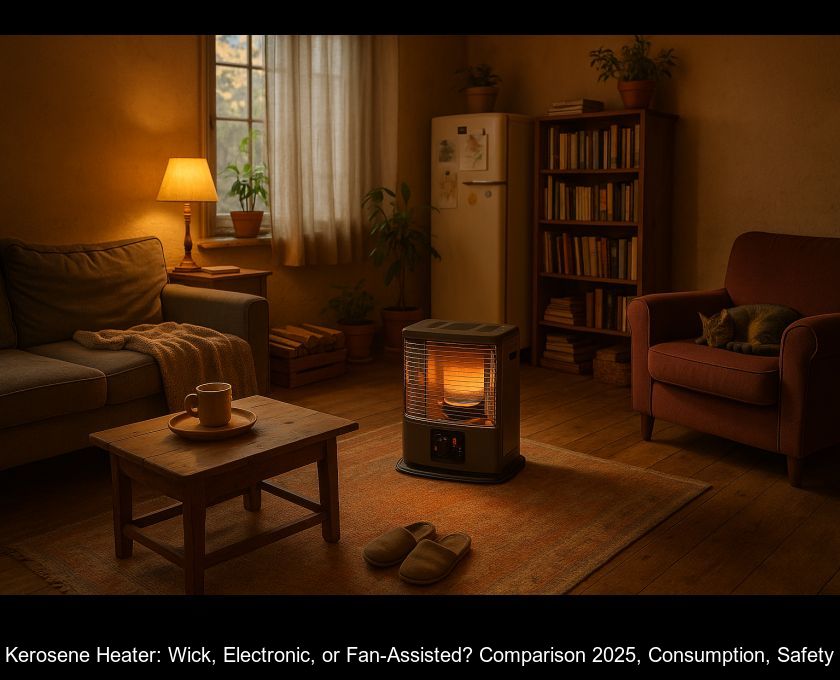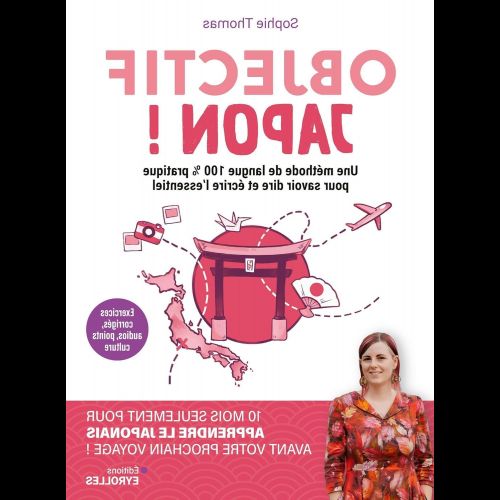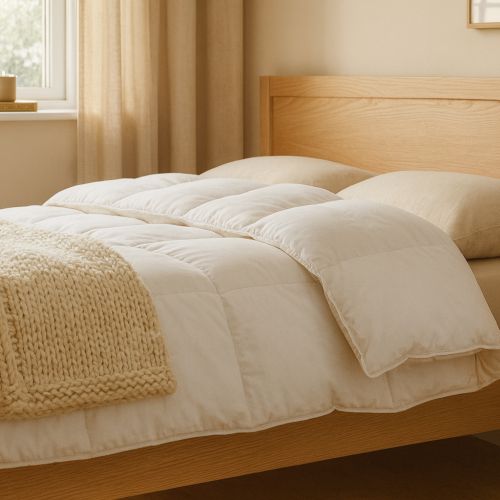Kerosene Heater: Wick, Electronic, Or Fan-assisted? Comparison 2025, Consumption, Safety
You are looking for a simple and quick supplementary heating solution for mid-season or a seldom-used room... but which one to choose between a wick heater, an electronic model, or a fan-assisted device? Here is a clear guide to help you make the right decision, with concrete benchmarks on consumption, comfort, and safety.
What to Expect Depending on the Type of Device
There are different types of kerosene heaters:
**Wick Heater**: Mechanical, operates without electricity, ignition by simple or double combustion wick. More affordable to purchase, but odors during lighting/shutdown and wick maintenance. Mainly emits heat through natural convection.
**Electronic (or "Laser") Heater**: Injection burner, precise thermostat, programmability, multiple safety features. Requires electricity. More even heat distribution, better odor control, often includes an integrated blower.
**Fan-Assisted**: Air circulation speeds up temperature rise and evens out the heat distribution in the room. Most "electronic" heaters are fan-assisted. Expect a slight fan noise.
The right choice according to the use
- Occasional use, non-electrified cabin/garage: wick heater for its total autonomy. Check ventilation, limit the duration of use, and accept some odor upon ignition/shutdown.
- Living space, need for stable comfort: electronically controlled fan heater for regulation and even distribution. Ideal for occasional supplemental heating, not continuous use.
- Rapid temperature increase: fan heater, as air circulation reduces cold spots.
- Tight budget at purchase: entry-level wick heater, but anticipate wick maintenance.
Consumption and cost per hour
On average: 0.25 L/h for a 3 kW wick heater, 0.30 to 0.40 L/h for a 4 kW electronic heater. The electricity cost for an electronic heater remains low. Converted into euros: with a 5 L can of unscented petroleum seen around 18 euros in mass retail, it comes to ~0.90 euros/h for 0.25 L/h and ~1.45 euros/h for 0.40 L/h, excluding electricity. These values are indicative since consumption depends on the desired temperature, insulation, and volume.
Odors, noise and comfort
Electronics limit odors and better maintain temperature thanks to the thermostat, a valuable asset in a bedroom or living room. Wick models, even with double combustion, are still more sensitive to odors when starting up and shutting down. As for noise, expect a slight breeze from ventilated devices.
Safety: Rules to Follow
A kerosene heater remains an auxiliary heating unit for intermittent use. Ventilate daily, do not block the vents, do not use it continuously, install a CO detector in your home, and read the manual: the manuals mention built-in safety features and conditions of use.
Useful numerical reminder: in France, 3,000 to 4,000 CO poisonings per year, with about a hundred deaths, mainly from October to April. Ventilation and maintenance reduce the risk.
Apartment and Condominium: What Does the Regulation Say?
Many condominium regulations prohibit "unvented liquid fuel-burning appliances." Before purchasing, check your building's rules, and if necessary, ask the property manager. In any case: ensure proper ventilation and limited use, never in a room without airflow.
Fuel: Which Oil to Choose?
Opt for a deodorized oil compatible with your device, adhere to storage guidelines and safety pictograms.
Avoid makeshift mixtures, never refuel while the device is on.
Major retailers clearly label "deodorized oil" for auxiliary heaters.
Maintenance and Lifespan
Wick: periodic replacement, clean as per the manual.
Electronics: monitor filters, error codes, batteries or clock backup, and run the device for a few minutes at the start of the season to purge air from the system.
The "laser" manuals detail weekly programming and safety features such as shutdown in case of tipping over or poor air quality.
Checklist Before Buying
- Volume and insulation: the useful power often ranges from 2 to 4 kW for a standard room. Plan for air renewal.
- Electricity available?: no power = wick heater, stable current = more comfortable ventilated electronic heater.
- Acceptable odors?: electronic is preferable in living spaces. Fuel quality also matters.
- Condominium regulations: check in writing before investing.
- Overall budget: purchase price + fuel, considering a typical consumption of 0.25 to 0.40 L/h.
The swift verdict
- If you want complete autonomy: wick, occasional use, ensure good ventilation.
- If you want comfort and precision: electronically ventilated, thermostat, programming, safety features.
- If you want to quickly heat a cold room: ventilated, for even heat distribution.
N.B. (Nota Bene)
A space heater is not a permanent solution. Never use a portable device for continuous heating, ventilate for 10 minutes a day even in winter, and do not repurpose other equipment for heating. If you experience headaches, dizziness, or nausea, ventilate immediately, turn off the device, evacuate, and call emergency services.
Express FAQ
Does an electronic stove consume a lot of electricity? No, the bulk of the cost comes from the fuel; electricity powers the electronics and the fan.
What does a double combustion wick change? Better post-combustion of gases, so fewer odors and better efficiency than single combustion, but it is still less precise and comfortable than an electronic one.
Are there built-in safety features? Yes: anti-tip, overheating, CO? atmosphere sensors, child lock depending on the model. Read the manual.









